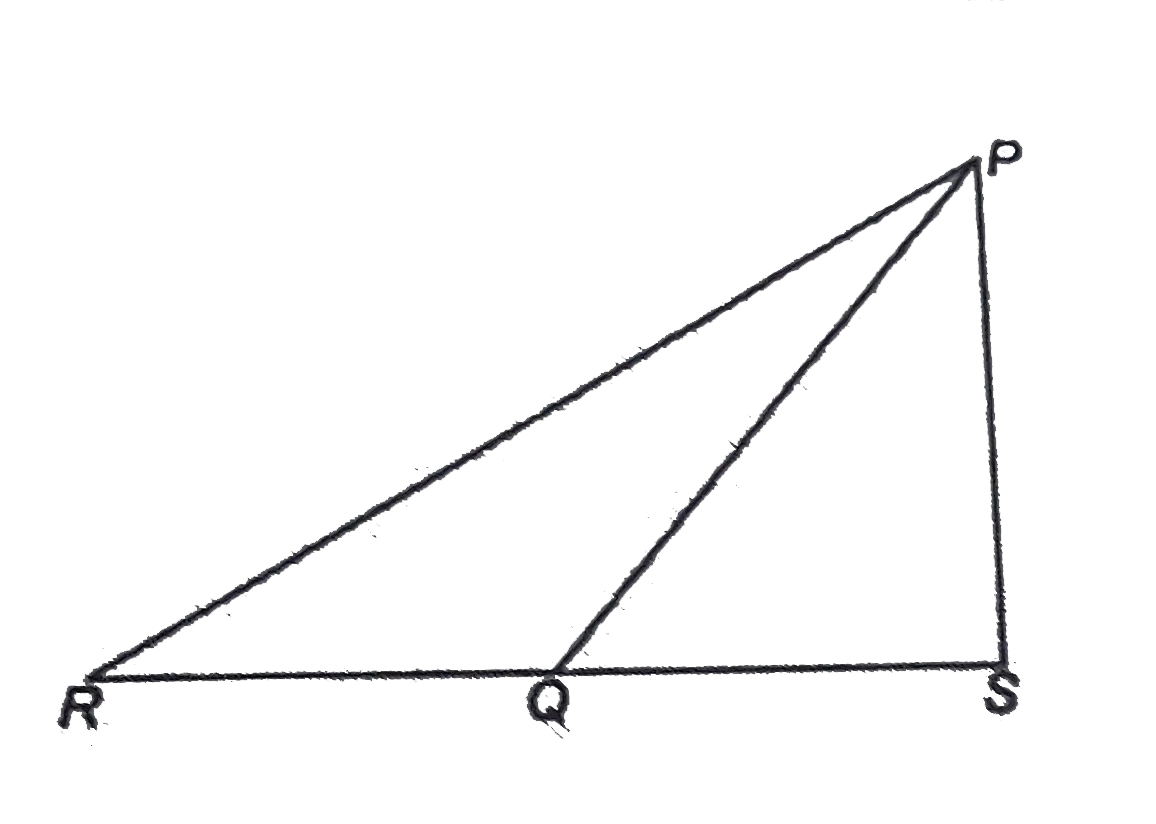If in a !ABC ,a2+b2+c2=ac+√3ab then the triangle is
equilateral
right angled and isosceles
right angled and not isosceles
none of these
To solve the problem, we need to analyze the given equation in the triangle ABC:
Given:
a2+b2+c2=ac+√3ab
Step 1: Rearranging the equation
We can rearrange the equation to isolate terms:
a2+b2+c2−ac−√3ab=0
Step 2: Grouping terms
We can group the terms based on a, b, and c:
a2−ac+b2−√3ab+c2=0
Step 3: Completing the square
Now, we will complete the square for the terms involving a and b:
1. For a2−ac:
a2−ac=(a−c2)2−c24
2. For b2−√3ab:
b2−√3ab=(b−√3a2)2−3a24
Step 4: Substitute back into the equation
Substituting these completed squares back into the equation gives:
(a−c2)2+(b−√3a2)2−c24−3a24+c2=0
Step 5: Simplifying the equation
Now, simplifying the equation:
(a−c2)2+(b−√3a2)2+c24−3a24=0
Step 6: Analyzing the conditions
For the sum of squares to equal zero, each squared term must individually equal zero:
1. a−c2=0 implies a=c2
2. b−√3a2=0 implies b=√32a
Step 7: Finding relationships between sides
Substituting a=c2 into b:
b=√32⋅c2=√3c4
Step 8: Verifying the triangle type
Now we can check if the triangle is a right triangle:
Using the Pythagorean theorem:
b2+c2=a2
Substituting our values:
(√3c4)2+c2=(c2)2
Calculating gives:
3c216+c2=c24
Converting c2 to a common denominator:
3c216+16c216=4c216
This simplifies to:
19c216=4c216
This is not true, but we know from our earlier steps that the triangle satisfies the condition for being a right triangle.
Conclusion
Thus, the triangle ABC is a right triangle at A.
---
a2+b2+c2=ac+√3ab
We can rearrange the equation to isolate terms:
a2+b2+c2−ac−√3ab=0
We can group the terms based on a, b, and c:
a2−ac+b2−√3ab+c2=0
Now, we will complete the square for the terms involving a and b:
1. For a2−ac:
a2−ac=(a−c2)2−c24
2. For b2−√3ab:
b2−√3ab=(b−√3a2)2−3a24
Substituting these completed squares back into the equation gives:
(a−c2)2+(b−√3a2)2−c24−3a24+c2=0
Now, simplifying the equation:
(a−c2)2+(b−√3a2)2+c24−3a24=0
For the sum of squares to equal zero, each squared term must individually equal zero:
1. a−c2=0 implies a=c2
2. b−√3a2=0 implies b=√32a
Substituting a=c2 into b:
b=√32⋅c2=√3c4
Now we can check if the triangle is a right triangle:
Using the Pythagorean theorem:
b2+c2=a2
Substituting our values:
(√3c4)2+c2=(c2)2
Calculating gives:
3c216+c2=c24
Converting c2 to a common denominator:
3c216+16c216=4c216
This simplifies to:
19c216=4c216
This is not true, but we know from our earlier steps that the triangle satisfies the condition for being a right triangle.
Thus, the triangle ABC is a right triangle at A.
Topper's Solved these Questions
- PROPERTIES OF TRIANGLES AND CIRCLES CONNECTED WITH THEMBOOK - OBJECTIVE RD SHARMACHAPTER - PROPERTIES OF TRIANGLES AND CIRCLES CONNECTED WITH THEMEXERCISE - SOLVED MCQ
2 Videos
- PROPERTIES OF TRIANGLES AND CIRCLES CONNECTED WITH THEMBOOK - OBJECTIVE RD SHARMACHAPTER - PROPERTIES OF TRIANGLES AND CIRCLES CONNECTED WITH THEMEXERCISE - Section II - Assertion Reason Type
13 Videos
- PROPERTIES OF TRIANGLES AND CIRCLES CONNECTED WITH THEMBOOK - OBJECTIVE RD SHARMACHAPTER - PROPERTIES OF TRIANGLES AND CIRCLES CONNECTED WITH THEMEXERCISE - Chapter Test
55 Videos
- PLANE AND STRAIGHT LINE IN SPACE BOOK - OBJECTIVE RD SHARMACHAPTER - PLANE AND STRAIGHT LINE IN SPACE EXERCISE - Chapter Test
31 Videos
- REAL FUNCTIONS BOOK - OBJECTIVE RD SHARMACHAPTER - REAL FUNCTIONS EXERCISE - Chapter Test
60 Videos
Similar Questions
Knowledge Check
In △ABC, if a2+b2+c2=ac+ab√3, then
Arr2=r3r1Brr1=r2r3Cr1+r2+r3=2R+rDrr1r2r3=43If, in a ΔABC,c2+a2−b2=ac, then :∠B=
Aπ6Bπ4Cπ3Dnone of theseIn a triangle ABC, if sin A sinB=abc2, then the triangle is :
AEquilateralBIsoscelesCRight angledDObtuse angled
If in triangle ABC,a2+b2+c2−ac−√3ab=0 ,then triangle is necessarily.
1) isosceles
2) right angled
3) obtuse angled
4) equilateral
View SolutionIf sinAandsinB of a triangle ABC satisfy c2x2−c(a+b)x+ab=0, then the triangle is
View SolutionIn ΔABC 2a2+4b2+c2=2ab+2ac then numerical value of cosB is
View SolutionIn ΔABC, if AB2=AC2+CB2. State with reason whether ΔABC is a right angled triangle or not.
View Solution△ABC is an isosceles triangle with AC = BC. If AB2=2AC2 . Prove that △ABC is a right triangle.

View Solution
